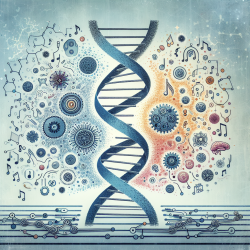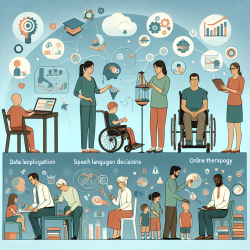Introduction
22q11.2 deletion syndrome (22q11DS), also known as DiGeorge syndrome, is a complex genetic disorder resulting from a deletion on chromosome 22. It affects approximately 1 in 4,000 live births and is associated with a wide range of phenotypic manifestations, including developmental delays, congenital heart defects, craniofacial anomalies, and neuropsychiatric disorders. Recent research, such as the study titled "In the line-up: deleted genes associated with DiGeorge/22q11.2 deletion syndrome: are they all suspects?" has provided valuable insights into the genetic underpinnings of this syndrome, emphasizing the multigenic nature of its pathogenesis.
Key Findings from the Research
The study conducted a comprehensive analysis of the 56 protein-coding genes within the 3 Mb region of the 22q11.2 deletion. It highlighted that the syndrome cannot be attributed to the haploinsufficiency of a single gene but rather involves complex interactions among multiple genes. This multigenic interaction affects fundamental cellular processes crucial for development and homeostasis.
The research categorized these genes based on their primary cellular functions, revealing that shared molecular functions and convergent pathways are critical in the manifestation of 22q11DS phenotypes. These findings challenge the traditional single-gene hypothesis and suggest a more intricate genetic interplay.
Implications for Practitioners
For practitioners, especially those involved in speech and language therapy, understanding the multigenic nature of 22q11DS is crucial. Here are some ways this research can inform practice:
- Holistic Assessment: Given the multigenic nature, assessments should consider the broad spectrum of potential developmental and behavioral impacts. This approach ensures that interventions are comprehensive and tailored to the individual's unique genetic profile.
- Collaborative Approach: Collaboration with geneticists and other healthcare professionals can provide a more integrated care plan. Understanding the genetic basis can help in anticipating potential challenges and planning appropriate interventions.
- Focus on Multimodal Interventions: Interventions should address not just speech and language but also cognitive and social skills, as these are often interconnected in 22q11DS. Multimodal approaches can lead to better outcomes.
Encouraging Further Research
The study underscores the importance of continued research into the genetic mechanisms underlying 22q11DS. Practitioners are encouraged to stay informed about ongoing research and consider participating in studies that explore the genetic and phenotypic complexities of this syndrome. Such involvement can enhance the understanding of 22q11DS and improve therapeutic strategies.
Conclusion
The research on 22q11.2 deletion syndrome highlights the complexity of its genetic architecture and the necessity for a multigenic perspective. For practitioners, this means adopting a holistic, collaborative, and multimodal approach to therapy. By integrating these insights into practice, we can better support individuals with 22q11DS and improve their developmental outcomes.
To read the original research paper, please follow this link: In the line-up: deleted genes associated with DiGeorge/22q11.2 deletion syndrome: are they all suspects?










